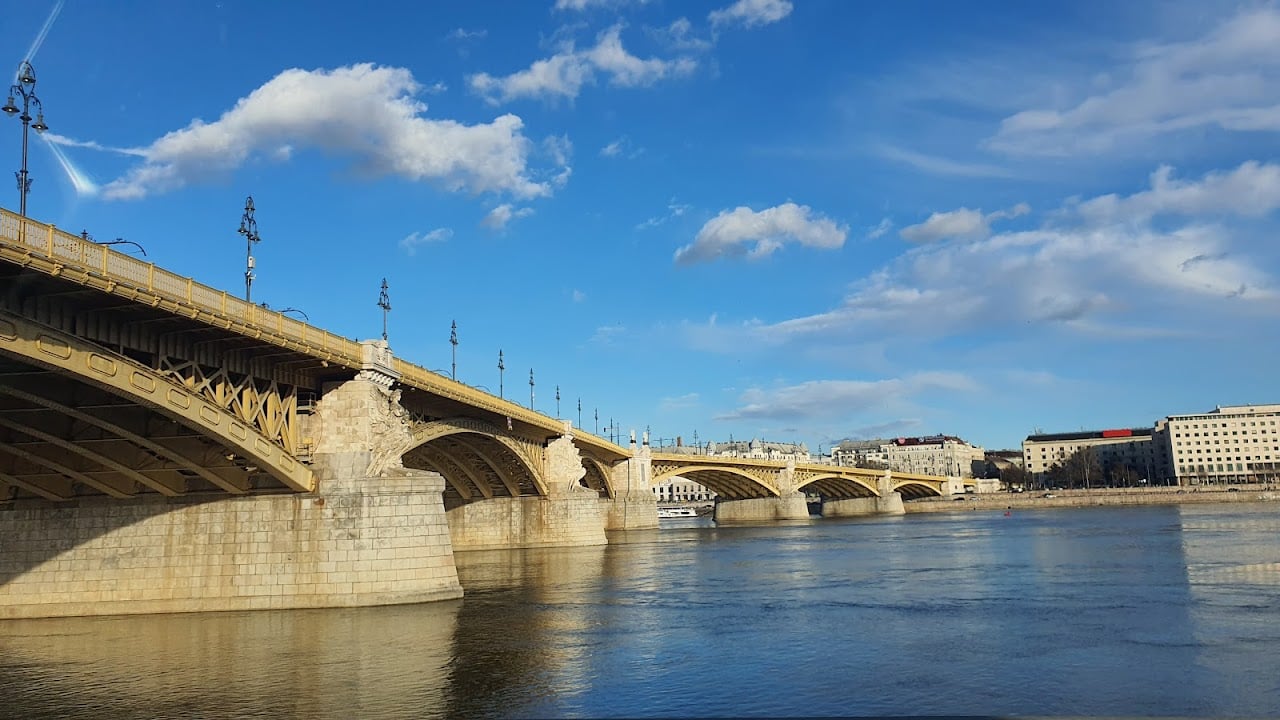Margit Bridge





Ask ThatchGPT
Suggest a local expert to plan my trip
Suggest an unique itinerary for my Budapest trip
What foods do Budapest locals eat
What are some true hidden gems in Budapest
Help me brainstorm trip ideas for Budapest
Help me plan a family-friendly trip to Budapest
What people say
Pedro Pereira
Available for hire
"Margaret Bridge, or Margit híd, is a three-way structure spanning the Danube River in Budapest. Connecting the city’s Buda and Pest sides, it also provides access to Margaret Island, making it a unique architectural feature in the Hungarian capital. This second-oldest bridge in Budapest was designed by French engineer Ernest Goüin and constructed between 1872 and 1876 by the Maison Ernest Goüin et Cie company, with Émile Nouguier overseeing the project. The design includes an unusual 165-degree angle to accommodate the link to Margaret Island, a later addition implemented two decades after the main structure was completed.
The bridge witnessed significant damage during World War II. In November 1944, an accidental explosion—triggered prematurely by a tram spark—destroyed the eastern span, resulting in the tragic loss of hundreds of lives, including civilians, soldiers, and Jewish forced laborers. The bridge was further devastated in January 1945 when retreating German forces demolished all of Budapest's Danube crossings. Reconstruction efforts salvaged much of the original steel, preserving its historic essence.
By the early 2000s, the bridge's deteriorated state necessitated extensive restoration. The renovation began in 2009 and concluded in 2011, funded partially by the European Union. The work involved structural updates, including durable steel replacements, widened lanes, expanded sidewalks, and the addition of bike paths, while striving to restore its 19th-century aesthetic.
During the restoration, human remains were unearthed, revealing victims of the Arrow Cross Party’s wartime atrocities. This dark history adds to the bridge's poignant legacy, which inspired Hungarian poet János Arany’s ballad "Híd-avatás" ("Bridge Inauguration"), capturing the emotional weight of its history."
Read more in:
Polly F
Available for hire
"Made of limestone, it represents a wind up toy, which both the car, and the toy version, were common in Hungary during Soviet times. It is located at the bridgehead on the Buda side"
Mentioned in these guides
About Margit Bridge
Get the inside scoop on Margit Bridge from local experts, travel creators, and tastemakers. Browse genuine trip notes, Margit Bridge reviews, photos, travel guides, and itineraries from real travelers and plan your trip with confidence.
Save this spot for later or start mapping out a new trip today
Try our AI Travel Assistant and get instant answers to any questions about your trip.
Ask ThatchGPT

